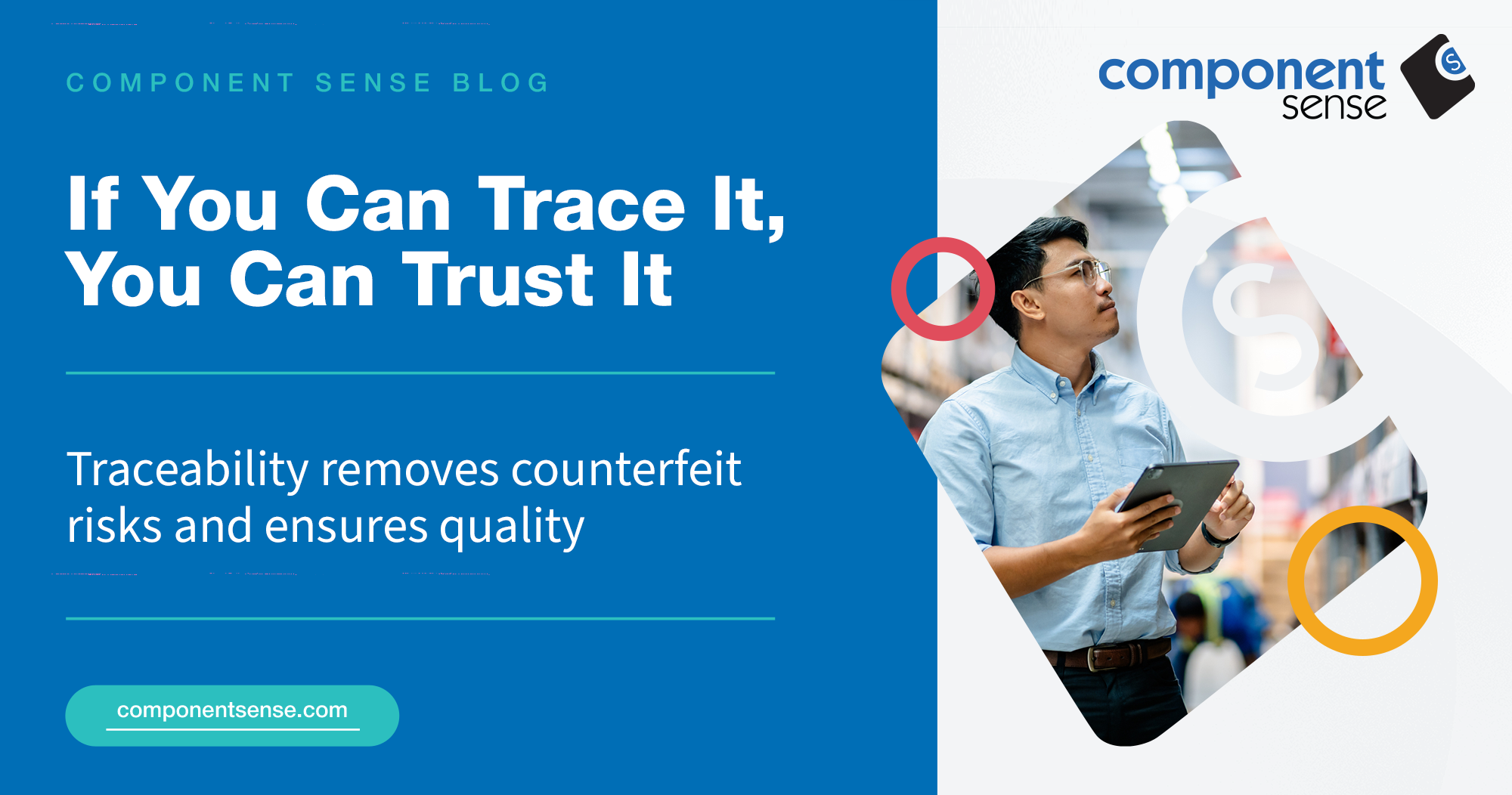Importance of Full Component Traceability

At Component Sense, we ensure that all the components we sell are fully traceable.
But what does this actually mean, and why is traceability so crucial for procurement professionals turning to the secondary market?
When it comes to electronic components, traceability generally means the ability to track the entire journey of the part back to its original manufacturer. This allows buyers to access crucial details such as when the component was made, how it was manufactured, serial numbers, and even the origin of its raw materials.
Unfortunately, the secondary market for electronics sometimes gets a bad reputation because of counterfeit parts. The truth is that by insisting on full traceability documentation from electronic components suppliers, procurers can ensure they simply buy surplus electronic components that are authentic and safe.
Removing the risk of counterfeit
In recent decades, particularly following the COVID-19 pandemic, counterfeit components have surged in the global supply chain. The ERAI (Electronic Resellers Association International) reported 786 suspected counterfeit and nonconforming parts in 2023, a slight increase from the previous year.
Counterfeit components can be difficult for the untrained eye to catch, as they are often very similar to authentic parts with subtle visual differences. Thankfully, if a component is fully traceable, you can track its entire history and ownership. Buyers can confidently purchase genuine devices by cross-referencing traceability information with official databases.
.png?width=347&height=253&name=image%20(1).png)

Transparency and compliance
Industries such as automotive, medical, aerospace, and military have strict regulations that manufacturers must follow. These rules extend to the components used on the production line and where they came from.
By tracing a component's history, procurement experts can verify that it has complied with proper guidelines throughout its lifecycle. For example, is it RoHS (Restriction of Hazardous Substances and Electronic Equipment) certified or has had adequate storage based on its msl (moisture sensitivity level)?
Quality assurance
Even slight discrepancies in quality can lead to production delays or even product recalls, which is unacceptable in any sector. Many methods, including robust quality assurance processes, can ensure quality when sourcing from the grey market. However, traceability has the potential to alleviate all concerns from the off.
Some companies choose to only purchase parts directly because of questions surrounding quality. When components on the secondary market are fully traceable, the quality is identical to what is available from direct sources, as the parts are unused and untouched.
 ‘Providing traceability offers reassurance to our customers as we know the origins of the parts we sell. We can ensure that our parts are authentic and can be traced back to the original manufacturer, ruling out counterfeits. Our rigorous quality inspection process then acts like a last line of defence,’ explains Component Sense Sales and Customer Service Specialist, Eve Fordyce.
‘Providing traceability offers reassurance to our customers as we know the origins of the parts we sell. We can ensure that our parts are authentic and can be traced back to the original manufacturer, ruling out counterfeits. Our rigorous quality inspection process then acts like a last line of defence,’ explains Component Sense Sales and Customer Service Specialist, Eve Fordyce.
Life cycle reporting and sustainability
Manufacturers are increasingly required to be fully transparent with their operations and business arrangements. EPR (Extended Product Responsibility) initiatives are holding electronic manufacturers responsible for their entire supply chain, upstream and downstream.
Traceability is a key enabler of ethical and transparent sourcing, as it provides companies with the information needed to disclose what exactly goes into their products and where parts came from. Accurate information, like date codes, also means companies can better plan for obsolescence and manage excess inventory.
Saving money
A 2022 report from Siemens stated that unplanned production downtime costs Fortune Global 500 companies 11% of their annual turnover. One faulty microchip can be all it takes to force costly production delays for electronic manufacturers. Ensuring that components are fully traceable eliminates the risk of substandard parts.
When considering electronic component cost-saving, risk reduction should be part of the equation. For general advice on how procurement professionals can save money, read our top tips for sourcing from the secondary market. In this article, we also discuss how the secondary makes it easy to buy hard-to-find electronic components.

Component Sense’s approach to traceability
At Component Sense, we understand what is on the line when sourcing components. That is why we offer a 100% counterfeit-free guarantee and full traceability to the original manufacturer for every component we sell.
As a business, we source our inventory directly from tier-one OEM (original equipment manufacturer) and EMS (electronics manufacturing services) companies. These manufacturers all have stringent safety measures already built into their supply chains and operations.
Source counterfeit-free components with Component Sense
When you buy excess electronic components, it is essential to ensure they are fully traceable. At the end of the day, your brand and reputation are on the line.
For over 22 years, Component Sense has helped procurement experts complete their BOM (bill of materials) in a safe, efficient, and cost-effective manner. We have made a name for ourselves as a trusted excess and obsolete component supplier for buyers.
By redistributing surplus inventory, we are promoting a circular economy. To date, we have saved over 30 million components from landfills. We also plant two trees for every order with our reforestation partner, One Tree Planted.
View our over 150,000 lines of fully traceable electronic components online now.